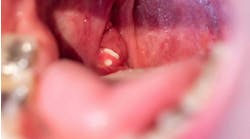In previous RDH issues, we introduced checklists that address office recordkeeping, training in infection control, hepatitis B vaccinations, post-exposure medical evaluations, barrier protection, and aseptic techniques. This month, we add a checklist for instrument processing.
Chris Miller, PhD
Instrument processing
- Contaminated instruments are gathered from chairside in a safe manner that minimizes the potential for sharps injuries.
- The staff who process instruments wear heavy utility gloves and other appropriate barriers (mask, protective eyewear, and protective clothing, for example) while gathering instruments, cleaning up operatories, and processing instruments. The barriers protect against direct contact with contaminants and chemical solutions.
- Contaminated items are transported to the decontaminating/sterilizing room in a manner that minimizes the risk of exposure to office staff and to the environment. Covered, rigid, leak-proof containers marked with a biohazard symbol are used when carrying any contaminated sharp instruments.
- Disposable items are carefully separated from the instruments and properly discarded. Cotton pliers or tongs are used (rather than your fingers) to reach into the contaminated instrument setups to safely retrieve any disposables.
- If instrument cassettes are being used, place cassettes in a cleaning rack.
- If instruments are loose on a tray and not in cassettes, carefully pick up the instruments (preferably with tongs to reduce risk of sharps injury) and place them into a cleaning basket.
- Placing instruments in a holding (presoak) solution is considered if instruments cannot be cleaned for a few hours. This may be an enzyme presoak or the same detergent to be used for the main cleaning. If plastic or aluminum cassettes are being used, check with the cassette manufacturer for the appropriate holding solution to use.
- If ultrasonic cleaning is used, the cleaning solution is one that is recommended for ultrasonic cleaning of instruments. The cleaner chamber is filled to the appropriate level with the solution (usually 1/2-inch to 1 inch from the top).
- If an instrument washer is used, the cleaning solution is one recommended for use in instrument washers. The directions supplied by the manufacturer of the washer are followed.
- The rack of instrument cassettes or the basket of loose instruments is placed into the ultrasonic cleaner or instrument washer, following loading instructions provided with the equipment. If such instructions are not available, care is taken to place only one to two layers of loose instruments in the ultrasonic cleaning basket. Assure that all parts of any cassettes placed into the chamber are completely submerged.
- If trays are used to hold the instruments at chairside, the trays are either discarded, if disposable, or properly decontaminated before reuse.
- Instruments are cleaned as recommended by the manufacturer`s directions. If directions are not available, clean the instruments until they are visibly free of debris. In ultra sonic cleaners, this may range from three to 20 minutes.
- Some cleaning units have automatic rinsing cycles. If not, the rack of instrument cassettes or basket of loose instruments is carefully removed and rinsed under tap water (avoid splashing).
- Cassettes/instruments are allowed to drain and dry.
- Rust inhibitors (needed with carbon steel items processed through steam) and/or appropriate lubricants are added when needed.
- Loose instruments and instrument cassettes are packaged in sterilization packaging materials (paper/plastic peel pouches, nylon-type tubing, or sterilization wrap).
- When necessary, appropriate chemical indicators are on the outside and biological indicators (spore tests) are on the inside of the packages.
- Packages are self-sealed or sealed with heat or sterilization tape.
- By following the sterilizer manufacturer`s instructions, packages are properly loaded into the sterilizer chamber. If instructions are not available, packages and cassettes are placed on their sides to better assure adequate exposure to the sterilizing agent and to avoid compression (leading to tearing of the packaging material).
- The sterilizer is operated according to the manufacturer`s directions.
- Packages are allowed to dry before removing from a steam sterilizer.
- Packages are allowed to cool before being handled.
- Biological indicators inside of packages are properly processed.
- Sterilized packages are stored in a clean, dry environment in a manner that reduces the chance of tearing the packaging material. The shelf life of a package ends when the package is torn or punctured.
- The oldest packages in storage are used first.
- Packages are delivered to chairside in a way that maintains the sterility of the instruments inside.
- Before the instruments are used, the chemical indicators on the packages are observed to assure that each package has been processed through the sterilizer. The packages are checked for tears and punctures to help assure sterility maintenance.
In summary, instrument processing is a multistep process requiring great attention to detail to help assure patient safety.
Chris Miller, PhD, is professor of oral microbiology and associate dean at the Indiana University School of Dentistry.





